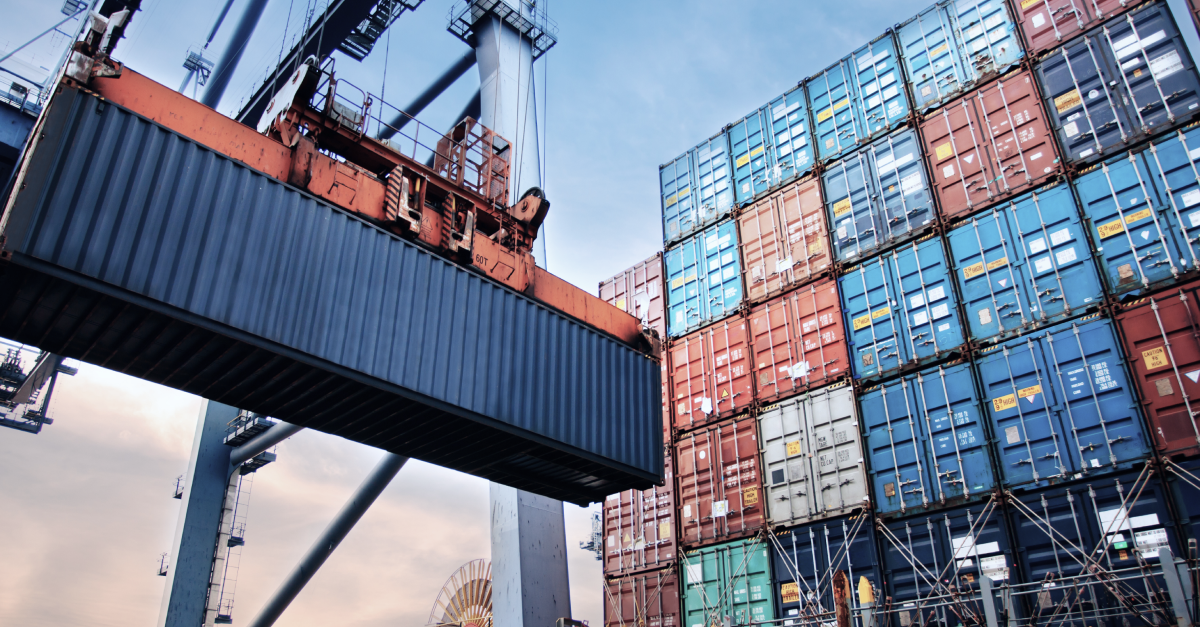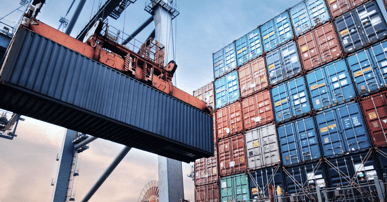So many ships, so many trades and so little volume.
This is the big conundrum for carriers and a theme which ties nicely into Xeneta’s ongoing series “No two trades are alike”, as we delve into two fronthaul trades where capacity management, or lack thereof, is having a big impact on rates.
Stunted global demand, an influx of new ships and the congestion triggered during Covid now all but gone leaves carriers with a surplus capacity headache.
How they choose to manage this situation today, and their plans for the future, will determine the type of market shippers face. But it would be an error to assume carriers’ approaches will be the same across the board, with their actions on one trade having a potentially significant impact on another.
The perfect example is found in the westbound Transatlantic and eastbound Transpacific trades, which have seen big fallout from capacity management.
Between the Far East and US West Coast, carriers have removed capacity to protect spot rates. Conversely, carriers have sacrificed profitability on the North Europe to US East Coast trade by turning it into a parking lot for unwanted capacity on other major lanes.
Removing capacity to protect rates is all well and good, but carrier pain must still be felt somewhere in such an unbalanced market.
.jpg?width=3527&height=1860&name=NTTAA%20-%20CAPACITY%20-%20GRAPH%20(1).jpg)
Justification for increased capacity will not be found in demand growth
Looking into the numbers, the extent of carriers’ capacity management challenge becomes clear. In October, capacity leaving the Far East for the US West Coast was 7.8% lower than October last year, according to Sea Intelligence.
In contrast, capacity between North Europe and US East Coast was up by 5.5% compared to October 2022.
On the Transatlantic trade, volumes year to date are down by 14% compared to last year. In September (the most recent available data), volumes were down by 16% on the same month in 2022.
Over on the Transpacific meanwhile, demand has increased by 28.8% in September compared to last year. Coupled with carriers removing capacity, this growth in volume has seen spot rates move upwards.
This traditional approach of capacity management could be seen as a huge success in isolation. But, unfortunately for carriers, global ocean freight shipping trades do not exist in isolation and their actions on the Transpacific could be seen as merely shifting a problem somewhere else rather than solving it.
Capacity management sees Transatlantic rates hit record low – but it’s a different story on the Transpacific
To reinforce this point, the Transpacific is the only major trade to see a higher spot rate today compared to a year ago, increasing by 8.1% to USD 1 850 per FEU. Not a huge increase in itself, but within the context of spot rate declines of more than 50% from the Far East to Europe, carriers will cling onto it as a bright spot in an otherwise gloomy market. Especially when considering that, although demand between the Far East and US West Coast has picked up in recent months, it still remains down by 11.7% year-on-year compared to January through September 2022.
Increasing capacity on the transatlantic has occurred alongside a 14.0% drop in volumes year to date. The impact on freight rates is unmistakable. Spot rates have fallen by 82.6% from a year ago, dropping to USD 1 270 per FEU on 20 November, the lowest spot rate ever recorded by Xeneta on this trade.
The hugely contrasting situations on these two trades shows the profound impact carriers’ capacity management strategies are having and underlines the importance of shippers understanding every trade in their supply chain.
New ships are on the way – but where will they be deployed?
Is there an end in sight for carriers’ capacity management woes? Volumes are expected to grow next year but record order books of new ships due for delivery will continue to feed overcapacity in the market.
In light of this, carriers’ decisions on where and how to deploy these ships will be critical to how rates develop, as we have seen so clearly during 2023 on the Transpacific and Transatlantic.
A further complication to add into the capacity conundrum is the impending divorce of 2M – the biggest alliance in ocean freight shipping when measured by fleet size. The alliance will officially end in 2025 but we are already seeing the paths of the two carriers – Maersk and MSC – starting to diverge.
The Transatlantic is good example of these two giants of container shipping going their separate ways.
In October, total capacity on the Transatlantic increased by 5.5% compared to a year ago. But within these figures, THE Alliance and Ocean Alliance increased capacity by 10.9% and 28.8% respectively, while 2M capacity fell by 12.6%.
This does not represent the full picture on this trade because a substantial amount of capacity is offered outside of alliances, but it does show how sands are shifting and the differing impact it has across trades.
For example, compared to October last year, MSC increased its offered capacity on the Transpacific by 13 050 TEU, which is more than the decline in 2M capacity. This is a pattern repeated on many other trades, with MSC in particular offering more standalone services to customers. Perhaps because they need new services to deploy their numerous new ships on.
We should expect more divergence between MSC and Maersk over the course of 2024, and this has the potential to blow a huge hole in carriers’ hopes of managing capacity to ensure profitable freight rates.
As the title says, ‘No two trades are alike’, in the case of the Transpacific and Transatlantic, they are becoming ever more different.
Want to learn more?
Contact us to learn how Xeneta can help you prepare for this upcoming tender season and supplier/buyer negotiations. Gain the upper hand with actionable real-time ocean and air freight rate and capacity data.
%201.png)




